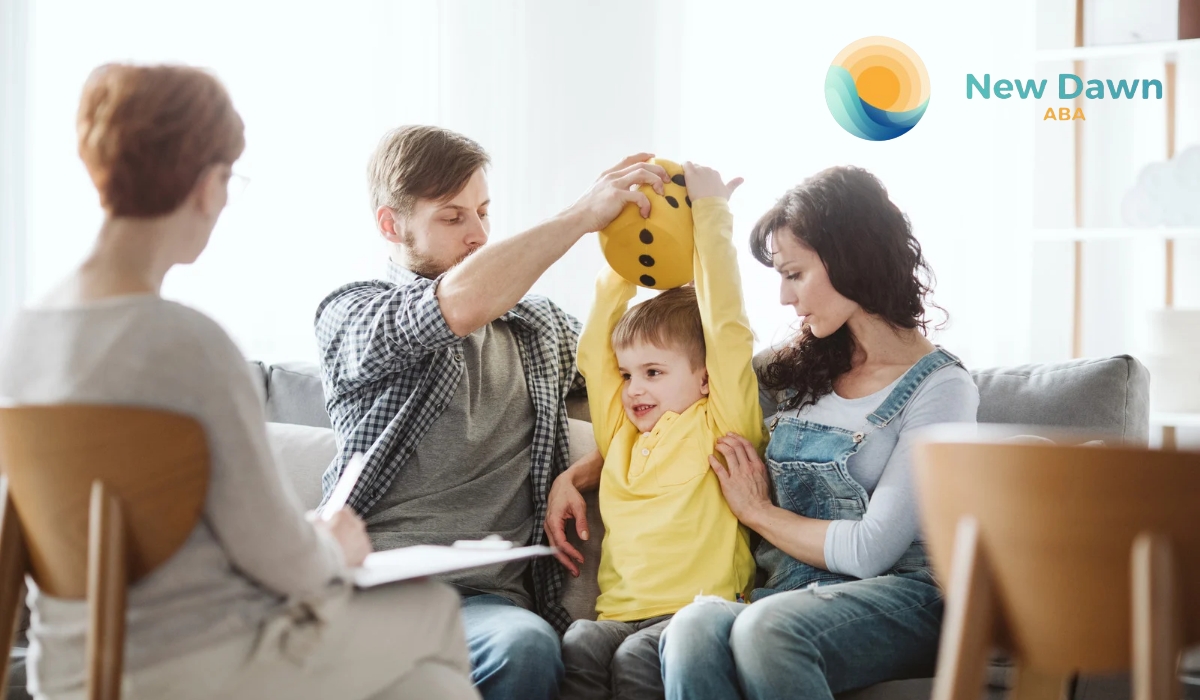Key Points:
- Many developmental and neurological conditions can present with symptoms similar to autism, making accurate diagnosis essential.
- Understanding the differences between autism and look-alike conditions can help parents seek the right support for their child.
- Professional evaluation, often involving multiple specialists, is critical for getting a clear diagnosis and an appropriate treatment plan.
For many parents, watching their child miss social cues, struggle with communication, or engage in repetitive behaviors can lead to a journey filled with questions. A common concern is whether these behaviors mean autism—or if something else might be going on.
Autism spectrum disorder (ASD) is widely known, but it shares traits with several other developmental and neurological conditions. That’s why it’s so important to recognize that not all signs pointing toward autism actually confirm it.
Understanding symptoms similar to autism can be reassuring and empowering. It helps parents know they’re not alone, allows for clearer communication with healthcare providers, and guides better decision-making when it comes to support and therapy.
Can Other Conditions Mimic Autism?
Yes, several medical and psychological conditions can show symptoms similar to autism. These similarities often include challenges in communication, social interaction, sensory processing, and repetitive behavior. While these signs may appear the same on the surface, the underlying reasons for them can differ significantly.
Getting an accurate diagnosis is crucial. Misdiagnosis can delay effective support and lead to unnecessary stress for both the child and the family. Parents should be aware of these possibilities so they can advocate effectively for their child’s needs.
Common Conditions That Can Resemble Autism
Below are some of the most common conditions that may show overlapping traits with autism. Each one has distinct features that set it apart, but they can appear very similar at first glance.
1. Social (Pragmatic) Communication Disorder (SCD)
This condition specifically impacts a child’s ability to use language in social contexts. Children with SCD may struggle with things like:
- Understanding jokes or sarcasm
- Taking turns in conversation
- Adjusting speech to fit different situations
What sets it apart from autism is that SCD does not include restricted or repetitive behaviors. So while a child may seem socially awkward or have difficulty communicating—symptoms similar to autism—the absence of certain behavioral patterns may point to SCD instead.
2. Attention-Deficit/Hyperactivity Disorder (ADHD)
ADHD and autism frequently get confused, especially in younger children. Symptoms that overlap include:
- Trouble focusing or shifting attention
- Impulsivity
- Difficulty with peer relationships
- Fidgeting or hyperactivity
Unlike autism, ADHD doesn't usually involve challenges with understanding nonverbal cues or developing age-appropriate communication skills. However, some children can be diagnosed with both conditions, so a thorough evaluation is key.
3. Sensory Processing Disorder (SPD)
SPD involves difficulty processing sensory input—things like sound, light, texture, or movement. Children may overreact or underreact to stimuli, a trait often seen in autism as well.
What makes SPD different is that it doesn't necessarily involve issues with communication or social interaction. Still, a child with SPD may seem withdrawn or easily overwhelmed, which can make the symptoms similar to autism in many cases.
4. Intellectual Disability (ID)
An intellectual disability involves limitations in intellectual functioning and adaptive behavior. These limitations affect everyday social and practical skills.
Children with ID may show:
- Delayed speech
- Struggles with problem-solving
- Challenges in social situations
While some children with autism also have intellectual disabilities, they are not the same condition. Autism involves specific behavioral patterns that are not always present in children with ID.
5. Anxiety Disorders
Children with severe anxiety, especially social anxiety, may avoid eye contact, withdraw from social interaction, or develop rigid routines—all behaviors that might resemble autism.
The key difference lies in the root cause: children with anxiety typically want to engage socially but feel fearful, whereas children with autism may not interpret social cues the same way or feel naturally drawn to social situations.
6. Language Delays and Speech Disorders
When a child is not talking or is hard to understand, autism may be suspected. But several speech and language disorders can cause delays without involving the broader social or behavioral signs of autism.
For example:
- Childhood apraxia of speech (a motor speech disorder)
- Expressive and receptive language disorders
- Hearing impairment leading to speech delay
These issues might create symptoms similar to autism, such as poor social response or limited verbal interaction, but they stem from different causes.
7. Reactive Attachment Disorder (RAD)
This condition can result from early childhood trauma, neglect, or unstable caregiving environments. Children with RAD may show:
- Difficulty forming attachments
- Avoidance of eye contact
- Emotional withdrawal
These behaviors can be mistaken for autism, but RAD has a different origin and requires trauma-informed treatment.
Why Accurate Diagnosis Matters
A correct diagnosis isn’t just about naming a condition—it’s the foundation for effective treatment. Children who exhibit symptoms similar to autism might not benefit from autism-specific interventions if they’re actually dealing with a different issue.
Diagnostic evaluations typically involve:
- Developmental screenings
- Behavioral assessments
- Input from multiple professionals (psychologists, speech therapists, pediatricians)
- Parent interviews and school observations
These useful tools help distinguish between autism and similar conditions, and they help build a personalized care plan that actually works.

What Parents Can Do
If you’re seeing signs that concern you, it’s important not to jump to conclusions. The best approach is proactive but calm. Here are some practical steps to consider.
1. Document Behaviors
Keep a daily journal or notes about what you observe. Include details like when the behaviors happen, how long they last, and what triggers them.
2. Consult a Pediatrician
Your child’s doctor is the best starting point. Bring your notes to help the pediatrician understand what you’re seeing.
3. Ask for Referrals
If concerns persist, ask for referrals to specialists, such as:
- Child psychologists
- Developmental pediatricians
- Speech-language pathologists
- Occupational therapists
4. Consider an Evaluation for ABA Therapy
If autism is diagnosed—or even strongly suspected—Applied Behavior Analysis (ABA) therapy can offer targeted support. ABA focuses on improving communication, social skills, and adaptive behavior through positive reinforcement.
Getting Support with ABA Therapy
Whether your child has a confirmed autism diagnosis or is being evaluated for symptoms similar to autism, support matters. At New Dawn ABA, we specialize in helping families navigate the challenges of autism with compassionate, science-backed care.
Our team is dedicated to providing ABA therapy in Colorado and Missouri, helping children build vital life skills through personalized programs designed to meet their unique needs. ABA therapy is effective not only for managing behaviors but also for enhancing communication, emotional regulation, and daily functioning.
If you’re unsure what’s going on with your child, or you’re looking for support after a diagnosis, get in touch with us today. Let’s work together to help your child reach their full potential.
Recent articles

At New Dawn ABA, we believe in brighter beginnings. Our team partners with families to build skills that matter—turning daily moments into meaningful progress and long-term independence.

.svg)
.svg)
.svg)
Quick Links
HomeAbout UsServicesLocationsResourcesCareersContact UsPrivacy PolicyOur Locations
MissouriColoradoKansas (Coming Soon)Oklahoma (Coming Soon)Contact Information
.png)
720-784-4944
.png)
720-784-4945
.png)
info@newdawnaba.com
Copyright © 2025 New Dawn ABA - All Rights Reserved.




